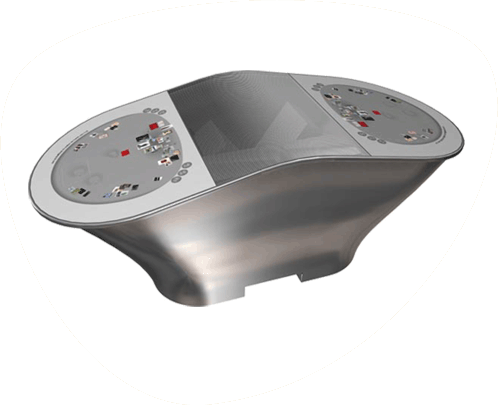
Like a regular table, Dialog is designed for social interactions, but it utilizes digital technologies
and an innovative interface to facilitate learning more about the arts. Gesture recognition and video-tracking
software allow multiple users to interact simultaneously with a variety of information appearing on the screen.
Using metaphors of water, players can choose artworks by selecting, enlarging, and dragging images from an
available "pool" of content to individual "puddles." Connections, represented as threads, are made between artworks,
creating links among various pieces and users. Additional information can be obtained about the artwork, including related audio
and video clips. Another function allows users to print postcards of favorite works.
This prototype was commissioned by the Walker Art Center through an international design competition in 2002. Dialog counters the isolated and individual interaction--one person, one monitor--that comprises most computer-related scenarios, exchanging the predominant model of personal computing for sociable computing.
This prototype was commissioned by the Walker Art Center through an international design competition in 2002. Dialog counters the isolated and individual interaction--one person, one monitor--that comprises most computer-related scenarios, exchanging the predominant model of personal computing for sociable computing.




